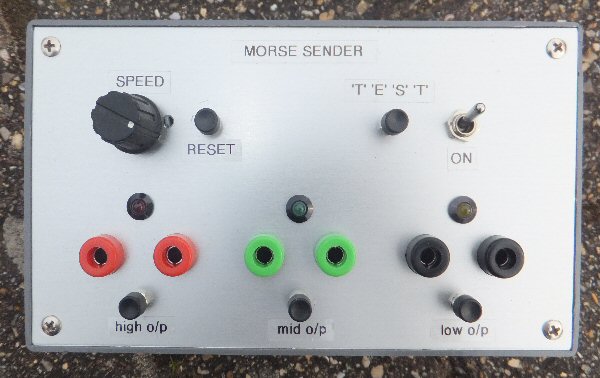PIC based morse code mirror galvanometer challenge


Each o/p also has a button which is used to send a unique number in morse code. The mirror galvanometer users have to read these signals to get the three numbers. This of course gets harder to do as the signal levels become smaller / weaker. Each o/p has an LED to show it is sending data. In the 'TEST' mode you see the LED's flash with the morse code but when they get to decoding the numbers the LEDs simply stay on while sending and dont give any visual clue to the data being sent!
I used a PIC16F84 and programmed it in assembler code to create the signals. 6 output pins of the 8 bit port were used. Two pins are used for each o/p. Normally each of these will be at zero voltage but one will go high so that current flows in different directions for a dot and dash e.g. for a 'dot' the first output (A0) of the port is set to ON, i.e. A0 = 1 while A1 = 0 for a 'dash' A0 = 0 and A1 = 1. When no signal is to be sent A0 = A1 = 0. Each pair go via resistors to the sockets so that the 5V is converted into a current (total of 4k7 to get ca. 1mA, 47k to get ca. 100μA and 470k for ca. 10μA).
|
Wiki Mirror galvanometer |
more soon |
more soon |
more soon |
PIC page |
THE CREATIVE SCIENCE CENTRE
home | diary | whats on | CSC summary | latest news